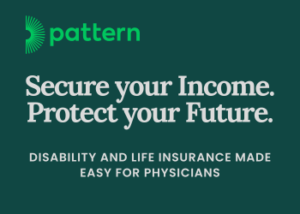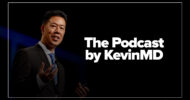I am a family physician. Like most of my colleagues, though, I must sometimes step out of the comfort of my clinical role to take on the role of patient or family caregiver.
Generally, these trips to the other side of the exam table inspire a fair amount of anxiety.
During visits to the doctor, I find myself noticing many details and comparing the quality of care to that in my own practice. I worry about how the doctor will relate to me — will I be viewed as a knowledgeable colleague, or as someone who knows relatively little? Will my background be treated with respect? Will my needs as a patient or caregiver be acknowledged? The uncertainty eases only when the physician wins my trust by showing both competence and caring.
My most recent such experience came via a family member, whom I’ll call Henry.
He had noticed a lump in the skin of his lower abdomen. It was smooth, firm, mobile and ovoid. There was no history of trauma, and it wasn’t bleeding or painful, but he kept noticing it, and over time, it grew.
When it reached more than one-half inch in size, Henry’s primary-care physician, Dr. Tilman, removed it. To everyone’s surprise, the growth turned out to be an exceedingly rare form of cancer.
Dr. Tilman referred Henry to the nearest specialty hospital, two hours’ drive from home. I was to accompany Henry on his visits.
Soon afterwards, Henry made his first trip to the hospital for an appointment with the oncologist, Dr. Ricci. Beforehand, we received detailed instructions on what to expect and what preparations to make; when we arrived, we found that parking for patients was free and convenient.
Dr. Ricci carefully reviewed Henry’s initial history, past history and preventive health measures. She had discussed his pathology findings with several other oncologists and had studied the literature on this rare form of cancer.
She ordered some tests for Henry, and he went to have them. The hospital staff gave me a list of nearby attractions and restaurants so I could explore the area meanwhile.
Later that same day, Henry and I met again with Dr. Ricci for a follow-up visit. She told us that she’d already contacted Dr. Tilman to discuss her recommendations and would send her a detailed consult note and copies of the relevant research literature.
I drove Henry back home, feeling pleased at how easily things had gone.
A week later, having reviewed Henry’s pathology slides again, Dr. Ricci contacted us to go over the different treatment options — their risks and benefits, pros and cons. To save us travel time, she did this by phone.
She recommended a wider re-excision of the original cancer site, and we agreed that this made sense, so she arranged for Henry to consult the hospital’s surgical team. To minimize travel time, the visit was scheduled for the day before the surgery.
The surgical team, Drs. Hendriks and Danner, indicated that they’d spoken to Dr. Ricci and reviewed the treatment options, the pathology slides and the recommended treatment plans. Dr. Danner again reviewed Henry’s full chart, including preventive measures, then examined Henry carefully and admitted him to the hospital overnight.
The surgery took place the following morning. Before and afterwards, I received regular phone updates on Henry’s progress; I could tell how attentively the team was dealing with his needs, and that they appreciated his individual quirks.
When I arrived to take him home, the receptionist said, “You’ve driven a long way to get here. If you’d like a cup of coffee while the resident prepares the discharge instructions, there’s a pot in the waiting room.”
After only a few minutes’ wait Henry and I departed, equipped with complete discharge instructions and follow-up procedures.
Dr. Tilman got a faxed copy of the discharge summary and the follow-up plan. The plan, created by the surgeon and oncologist, empowered her to manage Henry’s care unless complications occurred.
Our final contact with the hospital came five days later, when Dr. Danner called to tell us that the pathology findings on Henry’s excision were negative. He’s considered cured.
What and where is this excellent hospital, which features such smooth communication between specialists, primary-care doctors and patients?
It is the Cornell University Hospital for Animals, in Ithaca, New York. And “Henry” is Humphrey, my three-year-old black-and-white cat.
I had adopted him from the Humane Society six months previously, on the heels of losing two elderly cats to very prolonged illnesses. Humphrey is gregarious and affectionate, and I’d looked forward to several years of worry-free feline companionship, so I found his cancer diagnosis extremely frightening.
The hospital’s entire team of veterinary professionals showed phenomenal skill, thought and dedication in their care for Humphrey — and for me. As a physician, I was extremely impressed; as Humphrey’s family caregiver, I was tremendously relieved and grateful.
I found it deeply reassuring that the hospital scheduled consultations so that we could have closure with each one. There were no long delays in the diagnosis and treatment process; only a short time elapsed between the caregivers’ recommending and getting approval for Humphrey’s tests, administering the tests and responding to the results.
By scheduling Humphrey’s exam and follow-up visit for the same day, by clearly communicating a follow-up plan for his primary veterinarian and by giving a phone consultation, Humphrey’s caregivers acted in the spirit of a patient-centered medical home.
For this, I will be forever grateful. But my gratitude is tinged with sadness, because very often the efficient, patient-centered care Humphrey received is not available to human patients who face similar illnesses.
Most people’s medical insurance will not reimburse medical providers for two visits on a single day; nor can you obtain ultrasounds or CT scans on the same day as a consultation. Delay is often the norm, not the exception.
Recently, for instance, a patient of mine who has lung cancer waited nine agonizing days before her insurer approved her CT scan; her work-up spanned three weeks and five separate appointments at the tertiary-care center. And for a human patient, a consultation like my phone conversation with Dr. Ricci would typically require another office visit.
My experience with Humphrey’s caregivers showed me that veterinary medicine and human medicine, although very different branches of healing, hold similar values and priorities — the importance of efficient, patient-focused care; clear, timely communication between team members; the need to show kindness to the patient’s whole family.
I cherish this knowledge.
And I wonder: what if we could set up the human healthcare system so that the communication, competence and kindness that made Humphrey’s care so special — that made it so humane — were not only valued but also reimbursed?
Deborah Pierce is a family physician. This piece was originally published in Pulse — voices from the heart of medicine, and is reprinted with permission.























![Better dizziness diagnosis through skilled exams [PODCAST]](https://kevinmd.com/wp-content/uploads/Design-3-190x100.jpg)

